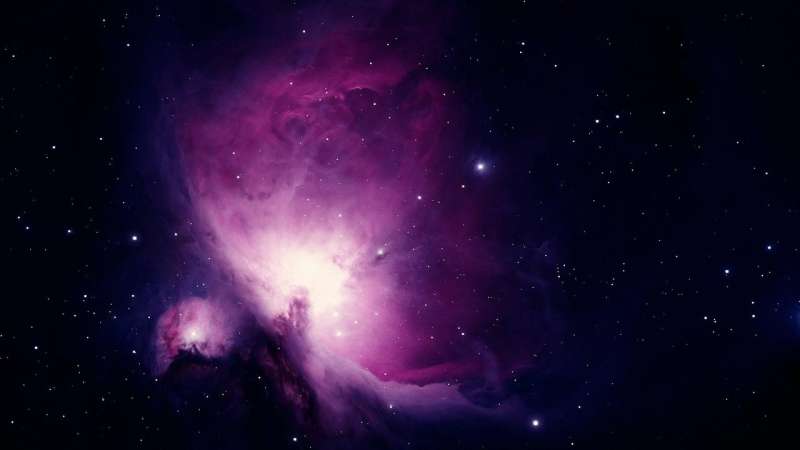Liftoff: Antares rocket boosts resupply ship from Virginia to the space station

As seabirds swooped and Atlantic waves lapped under a crisp blue sky, an Antares rocket roared to life Saturday morning and blasted off from Virginia's Eastern Shore without a hitch.
"Liftoff Antares!" said NASA spokeswoman Leah Cheshier as the booster shot skyward bearing a Cygnus spacecraft packed with more than 8,200 pounds of payload bound for the International Space Station. Whoops, cheers and applause broke out on the ground.
Minutes later, after the Cygnus successfully separated from the booster and achieved orbit, launch controllers at NASA Wallops Flight Facility clapped and shook hands. Colleagues monitoring from Houston and Dulles celebrated, too.
"Great job, Antares, and congratulations, Cygnus," said one NASA controller. "And Wallops Range, great job today. And MARS, thanks so much for the support. Couldn't have done it without you."
MARS, or the state-owned Mid-Atlantic Regional Spaceport at NASA Wallops, was built for these commercial resupply missions to the space station. State leaders are working to leverage it to make Virginia a hub for the commercial space industry.
Cygnus NG-12 is the 12th robotic commercial resupply mission to the station for Northrop Grumman, formerly the Dulles-based Orbital ATK. The vehicle is set to berth at the space station early Monday.
The Cygnus is christened the S.S. Alan Bean, after the Apollo 12 crew member who became the fourth man to walk on the moon 50 years ago this month. Bean died last year at the age of 86.
During what is typically a brisk "go, no-go" round of checks in the minutes leading up to launch, a Northrop controller took a moment to give the moonwalker his due:
"In honor of Alan Bean, who shared the gift of exploration in both life and in art, and inspired future generations to travel back to the moon and beyond, Northrop Grumman is go."
The Cygnus is carrying groceries and hardware for the station crew, including spacewalk equipment and CubeSats from college students, as well as some 4,600 pounds of science payload. Researchers routinely tout the importance of such research not only for long-duration missions that NASA plans to the moon, Mars and other deep-space destinations, but for improving life here on Earth.
One of those experiments could lead to new therapies for diseases that lead to cancer, insulin resistance and Type 2 diabetes. It involves using live mice to study the effects of microgravity on the 12-hour "circatidal" clock that's believed to control stress levels and coordinate metabolism.
That clock is part of the 24-hour circadian rhythm found in most living organisms, a daily cycle linked to the brain and to cues in the environment, like light and darkness, that helps to maintain overall health. A better understanding of how the body's natural rhythms respond in microgravity could help keep astronauts healthy on long space flights.
Female astronauts on the space station will be tasked with wearing an AstroRad vest being delivered by the Cygnus to test it for comfort and wearability during routine activities. The vest is being developed to shield astronauts—in particular sensitive organs such as lungs, stomach, breasts and ovaries—from chronic exposure to harmful space radiation. It will get its first radiation shield test next year when NASA sends its new Orion crew capsule, manned with test dummies, on a robotic mission around the moon.
Space-based technologies will get road-tested and honed, including a recycler that converts used polymer parts into filament feedstock so a 3-D printer can build new items, and a human/robot interface to see if an ISS crew member can control a robot on Earth well enough to pick up a rock. Such an interface is considered key to future missions in which an orbiting astronaut must control a robotic avatar on the surface of the moon or alien planet.
Other experiments include a look at how germinated barley seeds can be processed in microgravity, and using the harsh environment of space outside the station to test the strength and durability of 3-D-printed carbon fibers.
Once the Cygnus arrives at the station, the crew will use a robotic arm to capture and berth it. Then they'll begin to unpack it and load it up again with space station trash.
The spacecraft is set to stay at the station for about 70 days, then disengage in mid-January, when it will launch its CubeSats and perform maneuvers to test vehicle functions. Finally, it will return to Earth, burning up on reentry over the southern Pacific Ocean.
©2019 Daily Press (Newport News, Va.)
Distributed by Tribune Content Agency, LLC.




















